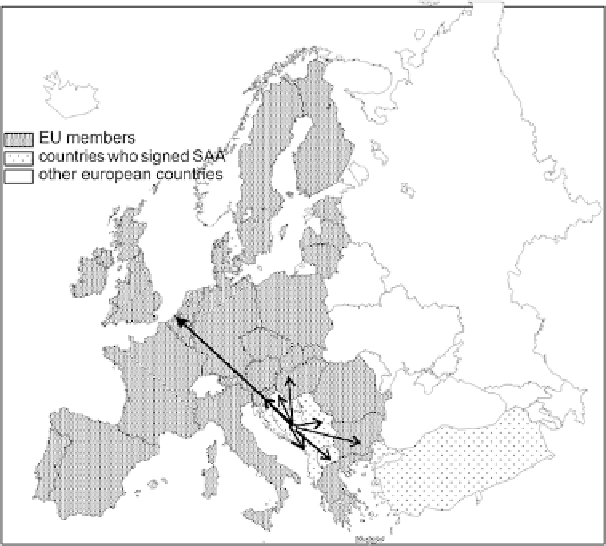Geoscience Reference
In-Depth Information
Fig. 15.1
Bosnia and Herzegovina and the United Europe
transformation. On the one hand, it is reflected by intensive process of deagrari-
sation, and on the other hand, by corresponding increase in number and share of
the employed people in activities of the secondary and tertiary sector. Fundamental
“push factor” of social restructuring of the farmers was a stagnation of agriculture,
which can also be seen from the lowest average annual growth rate of primary sector
(1.6%), twice lower than the average of total economy of Bosnia and Herzegovina
(3.7%) in period 1991-2008. On the other hand, superfluous agricultural population
was obviously attracted by more dynamical growth of propulsive non-agricultural
activities. This is proved by the data on average annual rates of national income,
secondary (4.0%) and tertiary sector (4.4%), in period 1991-2008.
Compared to its regional partners, economy of Bosnia and Herzegovina has the
highest rate of real GDP in the region. However, the EBRD data on GDP, calcu-
lated according to purchasing power, show that GDP of Bosnia and Herzegovina
per capita was US$ 7.168 in 2007. Method of parity of purchasing power is more
useful in comparison with standard of living between the countries, since it takes
into consideration both costs of living and inflation. Within the context of the
regional development, Bosnia and Herzegovina is behind Croatia, Romania and
Bulgaria.
There are big changes in population structure and level of urbanisation of Bosnia
and Herzegovina. Accordingly, almost 2,000,000 inhabitants abandoned agriculture

Search WWH ::

Custom Search